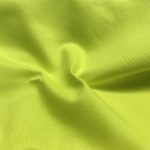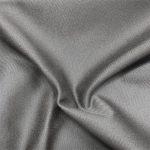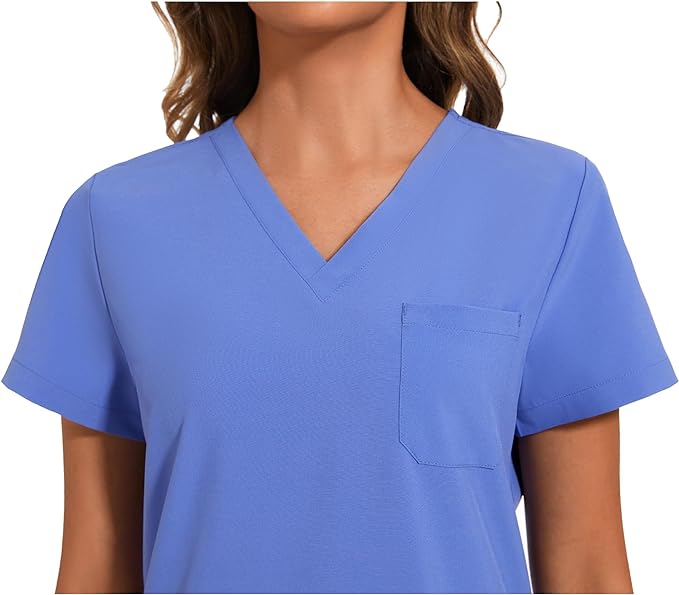In the modern healthcare setting, nurses are not only the backbone of patient care but also a symbol of the hospital’s image and professionalism. The selection of nurse uniforms is crucial because they need to be comfortable, functional, hygienic, and safe. The choice of fabric for nurse uniforms significantly affects nurses’ work efficiency and patient experience. In this article, we will discuss the common types of fabrics used for nurse uniforms, their advantages and disadvantages, and their suitable applications.
1. Cotton
Characteristics and Advantages
- Comfort: Cotton feels soft against the skin and is less likely to cause allergies.
- Breathability: Excellent breathability helps keep the skin dry and reduces stuffiness.
- Moisture Absorption: Can quickly absorb sweat, keeping the garment dry.
- Eco-friendly: Cotton is a natural fiber with biodegradable properties.
Disadvantages
- Wrinkling: Cotton wrinkles easily after washing and requires frequent ironing to maintain a neat appearance.
- Shrinkage: Cotton may shrink during the first wash and needs pretreatment.
- Moderate Durability: Pure cotton is less durable than some synthetic fibers and may show wear over time.
2. Polyester
Characteristics and Advantages
- Durability: Polyester has excellent abrasion resistance and can withstand frequent washing and wear.
- Wrinkle Resistance: Polyester fabric does not wrinkle easily and requires little to no ironing.
- Quick Drying: Polyester dries quickly, which is beneficial for hygiene maintenance.
- Easy Care: Polyester fabric is easy to wash and does not deform easily, making it convenient for daily care.
Disadvantages
- Average Breathability: Polyester is less breathable than cotton and may feel stuffy over long periods.
- Poor Moisture Absorption: Polyester has low moisture absorption, which can lead to discomfort from sweat.
- Static Electricity: Polyester can generate static electricity, attracting dust and hair.

3. Cotton-Polyester Blends
Characteristics and Advantages
- Balance of Comfort and Durability: Blended fabrics offer the softness and comfort of cotton and the durability and wrinkle resistance of polyester.
- Breathability and Quick Drying: Blended fabrics provide good breathability and dry quickly, suitable for work environments.
- Easy Care: Blended fabrics are less likely to wrinkle and require less frequent ironing, making them easy to maintain.
- Versatility: Blended fabrics are suitable for various work scenarios, from daily care to special environments like operating rooms.
Disadvantages
- Slightly Less Comfortable than Pure Cotton: Blended fabrics are comfortable, but not as much as pure cotton.
- Static Electricity: Due to the polyester component, blended fabrics can still generate static electricity and need special treatment.
4. Spandex
Characteristics and Advantages
- High Elasticity: Spandex has good elasticity and provides good freedom of movement.
- Comfort: Spandex is soft and comfortable, fits closely to the body, and does not irritate the skin.
- Durability: Spandex has good abrasion resistance and can withstand frequent stretching and wear.
Disadvantages
- Average Breathability: Spandex has poor breathability and may feel stuffy when worn for long periods.
- Poor Heat Resistance: Spandex is sensitive to high temperatures and requires careful washing and ironing.
5. Rayon
Characteristics and Advantages
- Softness: Rayon is soft and comfortable against the skin.
- Good Breathability: Rayon has good breathability and can help keep the skin dry.
- High Moisture Absorption: Rayon has good moisture absorption and is suitable for high-temperature environments.
Disadvantages
- Moderate Durability: Rayon has lower abrasion resistance and wrinkle resistance than polyester and requires special care.
- Shrinkage: Rayon may shrink when washed and requires careful handling.

Conclusion
The choice of fabric for nurse uniforms is not only about comfort and work efficiency but also affects the overall healthcare environment and patient experience. Different fabrics have their own advantages and disadvantages, and the selection should be based on specific needs and work environments. Cotton, polyester, cotton-polyester blends, spandex, and rayon are commonly used fabrics for nurse uniforms, each with its own advantages in terms of breathability, durability, and comfort. By properly combining these fabrics, you can create nurse uniforms that are comfortable and functional, provide good working conditions for nurses, and create a more reassuring healthcare environment for patients.
In the future, with the development of technology and the application of new materials, the fabrics for nurse uniforms will continue to be optimized and innovated, further improving the work experience of nursing staff and the quality of medical services.

 100% COTTON FABRIC
100% COTTON FABRIC COTTON STRETCH FABRIC
COTTON STRETCH FABRIC POLYESTER/COTTON FABRIC
POLYESTER/COTTON FABRIC OTHERS FABRIC
OTHERS FABRIC

